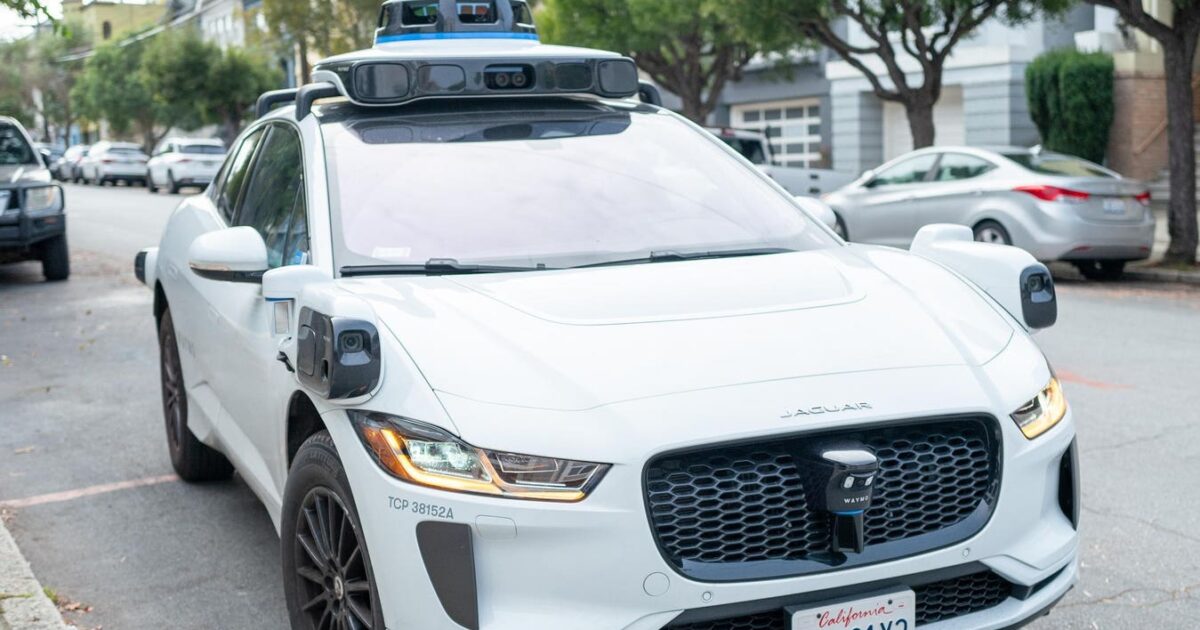Autonomy, Territory, Generality – The Ingredients Of A Real Robotaxi

A Waymo in San Francisco, where they fit the parameters of a real service.
There are now several companies actively playing in, or claiming to play in, the robocar/robotaxi space. As a result, people want to compare them, and judge how far along they are towards a real robotaxi. My past efforts have included a list of milestones for a project and the robotaxi timeline. As such, it’s worth discussing what the necessary requirements are to make a robotaxi or robocar.
- No constant human supervision (and safe enough to do that)
- Public streets
- A commercially viable service area
- Open to the general public, with no NDAs or prohibitions on videos
- Travel from anywhere to anywhere, with times, origins and destinations set by the riders
The Big One: Safe Autonomy
By far the biggest milestone is safe operation without full time human supervision on uncontrolled public roads. This is such a big one that one must effectively divide the teams which can do this from the teams which have yet to do it in a significant way. They are not even in the same race.
When a team does this, for real and not just as a limited demo, it shows that they have internally had a meeting where they decided they were good enough to do this without significant risk. No project is perfect, but teams are trying every day to judge the quality of their driving and make sure that risk is low. If they’re wrong, and they have a serious incident, it could easily mean the end of their entire project, and the squandering of what is often billions in investment.
This step is so big because it means the company did a lot of work to make their safety case. They had to make it to the lawyers and the board. In some places they have to make it to the government. And they have to get the public to trust it too.
Safe means “bet your life” safety, and many have said the vehicle be safer, even much safer than a human driver. That means being able to do 100,000 drives in a row without significant crash.
The step can seem small because every team still has human supervision until they are 99% of the way to making that case. Then one day they pass 100%, and the decision comes. But it turns out you can also be out there with human supervision when you are only 1% of the way there, even 0.1% which would be 100 flawless drives in a row. The public can’t tell if you are 1% or 99%, unless you are more transparent with internal data than any company has been. Even so, we try to figure out where they are, but from the outside, this is why the step is so large. Before a team does this, we have to treat them as possibly 1% of the way there unless they can show otherwise. Safety drivers (supervisors in the car who can intervene) work. They can keep a car safe even if it would crash every 10 miles on its own.
There are different amounts of human supervision. The most common is a human employee in the vehicle, normally behind the wheel. A few teams have put them elsewhere, either because they don’t have a wheel, or for appearances. Turns out that as long as they can hit an emergency stop, and especially if they can grab a wheel, it still works – as it has for literally billions of teen drivers (including myself and probably you) supervised by a driving instructor in the passenger seat who has only an extra brake.
The Tesla pilot in Austin is called a robotaxi, and it’s a pilot one. But because it has an … More
There’s been talk of remote supervision. Because remote data links can sometimes fail, there’s not good data on the safety record of this approach, though some companies have working remote driving. If it’s full time, it still doesn’t count as crossing that big line. Intermittent remote supervision and remote assistance continue forever, and do not disqualify a team from crossing the line.
Viable Territory
The system has to run on public streets. Lots of autonomous vehicles have been deployed on private property or other controlled areas. That’s useful but it’s much more limited. And it has to serve enough destinations that it would be a viable business, which means it has to be in an urban area with lots of demand for rides. Clearly some areas like Manhattan and London (the world’s top taxi markets) are both more difficult, and more lucrative, but we’ll judge you on how lucrative. Waymo’s early deployment in Chandler, AZ doesn’t score nearly so well as downtown San Francisco.
It also matters when you can drive. If you can only drive at night, like Cruise’s first deployment, that clearly cuts the viability. If you have to shut down in bad weather, you’re not a service people can depend on, and that’s a strike, though situations will vary.
Related to where you drive is where you can do “PuDo” – Pick-up and Drop-off. Some early projects have made people walk fairly far to get to such spots. The most extreme form of this is the “limited stop shuttle” which is more like a bus, with stops far apart, and possibly only a fixed route. That’s something, but it’s not a real robotaxi.
As such, many companies have had limited territory that would not be that viable, so in that case what matters is if we see a clear path to expansion to something viable.
Serve Real People
You need to be open to the public. A waitlist can be OK if you don’t have capacity yet, but you can’t limit ridership to people you have picked, or require them to sign NDAs or other agreements. People beholden to the company won’t be as clear and direct when they see warts. Indeed, because China has different cultural rules about online criticism, we sometimes have concern if we see all the warts on those services as we would in the USA or Europe. It’s not nothing to take employees or selected people for rides, but it’s also possible to paper over warts if that’s all you do.
Viable territory for a robocar (private consumer car with self-driving) can be quite different. It’s not viable to make a private car that only drives in one city or a few cities, you just would not sell enough. A taxi service that only drives one (larger) city can be a viable business. On the other hand, a private robocar that does most of the freeways and arterial roads in a country is a worthwhile product. It may not be able to drive to pick poeple up, but it can make commutes and any long terms much more pleasant. Also handy would be an ability to drive slow, short trips to recharge an electric car.
Generality
A fixed route service is useful, but much less so than a taxi which can go pretty much “anywhere to anywhere” in its service area. This is much harder because you must make your safety case on all reasonable streets. Riders won’t tolerate going far out of their way because of a limited street network.
While removing the supervision and being able to bet your life is pretty much a yes/no thing, there are degrees of territory size and viability, and of generality. When looking at the progress of a project, sometimes you can see the path to a more complete offering clearly, sometimes it’s hard (even for those inside) to judge how long it will take. While having a fixed-route service isn’t nearly as hard as doing a general anywhere-to-anywhere one, one can see the path of expansion, and look how much work it is to expand the routes and stops. Waymo and Cruise and a few other companies all started staying out of downtowns, but moved there in time. Waymo (and everybody else except the trucking players) are still keeping off the freeways due to the high speed.
Infrastructure
It’s not directly needed to have a real robotaxi service, but if you want to scale and convince the world you’ve arrived, you need to do a lot of stuff locally in terms of infrastructure and local logistics. The article below helps explore the many things you need to do.
As noted in the Robotaxi Milestones, because companies often don’t disclose all their safety data, the only clues the public gets as to progress come from what their actions say about what they have calculated internally. That’s why we now use the “Yoda Test” – there is no “try,” only “do.” Being able to do all the things above is where everybody needs to get, and from there they need to scale it up to more service area, more conditions, more vehicles and more.

